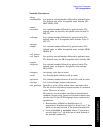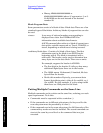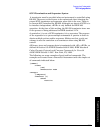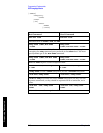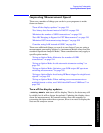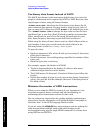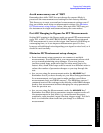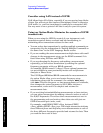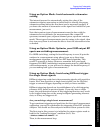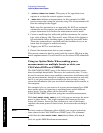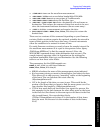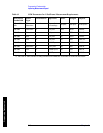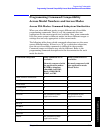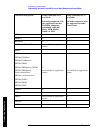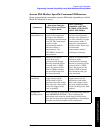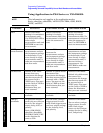
Chapter 6 515
Programming Fundamentals
Improving Measurement Speed
Programming Fundamentals
Using an Option Mode: Avoid automatic attenuator
setting.
The internal process for automatically setting the value of the
attenuator requires measuring an initial burst to identify the proper
attenuator setting before the next burst can be measured properly. If
you know the amount of attenuation or the signal level needed for your
measurement, just set it.
Note that spurious types of measurements must be done with the
attenuator set to automatic (for measurements like: output RF
spectrum, transmit spurs, adjacent channel power, spectrum emission
mask). These types of measurements start by tuning to the signal, then
they tune away from it and must be able to reset the attenuation value
as needed.
Using an Option Mode: Optimize your GSM output RF
spectrum switching measurement.
For ORFS (switching), setting the break frequency to zero (0) puts the
analyzer in a measurement setup where it can use a direct time
measurement algorithm, instead of an FFT-based algorithm. This
non-FFT approach is faster. (However, remember that your break
frequency for ORFS (modulation) measurements must be >400 kHz for
valid measurements, so you will need to change the break frequency if
you are making both types of measurements.)
Using an Option Mode: Avoid using RFBurst trigger
for single burst signals.
RFBurst triggering works best when measuring signals with repetitive
bursts. For a non-repetitive or single burst signals, use the IF(video)
trigger or external trigger, depending on what you have available.
RFBurst triggering depends on its establishment of a valid triggering
reference level, based on previous bursts. If you only have a single
burst, the peak detection nature of this triggering function, may result
in the trigger being done at the wrong level/point generating incorrect
data, or it may not trigger at all.
Are you making a single burst measurement?
To get consistent triggering and good data for this type of measurement
application, you need to synchronize the triggering of the DUT with the
analyzer. You should use the analyzer’s internal status system for this.
The first step in this process is to initialize the status register mask to
look for the “waiting for trigger” condition (bit 5). Use
:STATus:OPERation:ENABle 32
Then, in the measurement loop:



